Coin Values Moving with Precious Metals: Up-Dated 11/17/2025: Gold $4066 | Silver $50.70
1927 Penny Value
A step by step approach accurately determines 1927 penny value. Three important areas of the coin are identified and judged. Date | Mint Mark | Condition
Dates and Mint Marks are confirmed using images. Condition of your coin is compared to descriptions and images helping narrow the possible range of grade. All of these factors combined locates its value on the chart.
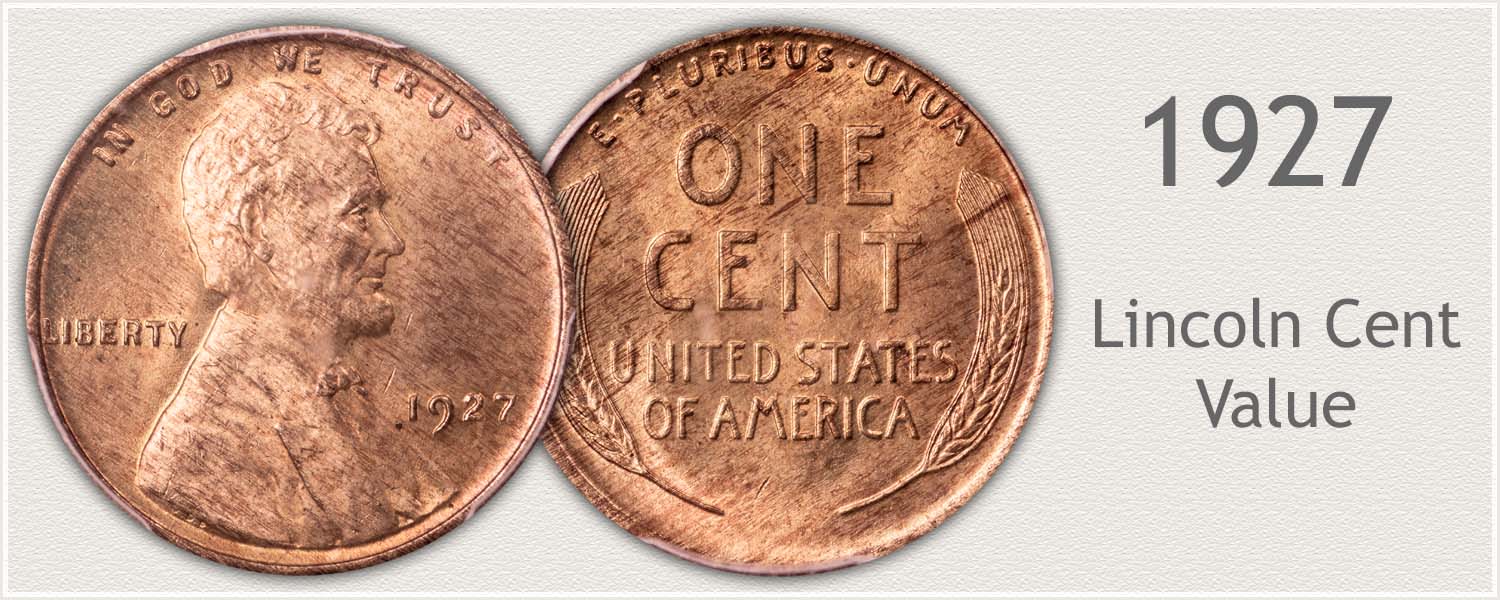
Steps Leading to Value:
- Step 1: Date and Mintmark Variety – Identify each date and its mintmark variety.
- Step 2: Grading Condition – Judge condition to determine grade.
- Step 3: Special Qualities – Certain elements either enhance or detract from value. All of these factors combined locates its value on the chart.
| 1927 Lincoln Penny Value | ||||
|---|---|---|---|---|
| Condition of Coin | ||||
| Date | Good | Fine | Extremely Fine | Uncirculated |
| 1927 Lincoln Penny Value Up-Dated | 2025 | |||
| 1927 | $0.14 | $0.60 | $1.42 | $7 |
| 1927 D | $0.63 | $1.63 | $7.15 | $36 |
| 1927 S | $0.76 | $1.54 | $15 | $71 |
Begin evaluating your coin and finalizing value by confirming its Date: Dates are a main focus in collecting coins. Each is unique in scarcity, popularity and desirability.
Step Two: Mint Marks: In 1927 three varieties of cents were produced, struck at the main mint and two branch mints. Mint marks identifying branch mints and further narrow value range.
Next: Complete a Judgement of Condition: Viewing the chart, condition plays an important role in scarcity and value. Images in the grading section are used to recognize a close match and complete the process.
Step 1: | Date and Mintmark Combination
Identify the Important 1927 Issue Wheat Penny
A close inspection to variety separates abundant from infrequently found 1927 cents. Branch mint issues continue the trend of scarcer varieties. Strong details remaining in the design indicates a premium grade and value.
1927 Lincoln Penny
No Mintmark Under Date: Philadelphia Mint Struck the Coin
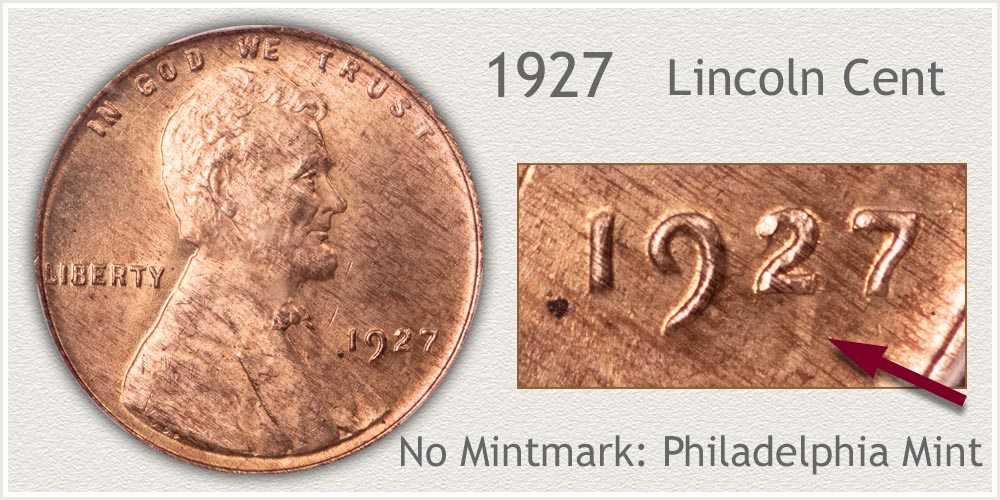
Ample production of 1927 wheat pennies results in abundant supplies of these for collectors to choose. Their preferences are noticeably nicer condition coins. In heavily worn condition the rarity scale places these Philadelphia varieties at the Abundant level.
Increases in demand come from young collectors at the Fine grade and above. Higher end collectors are very interested in Mint State examples with nice coloring. A marketable coin is well defined, crisp lettering along the edges, and a bold portrait of Lincoln.
1927-D Lincoln Penny
"D" Mintmark Under Date: Denver Mint Struck the Coin
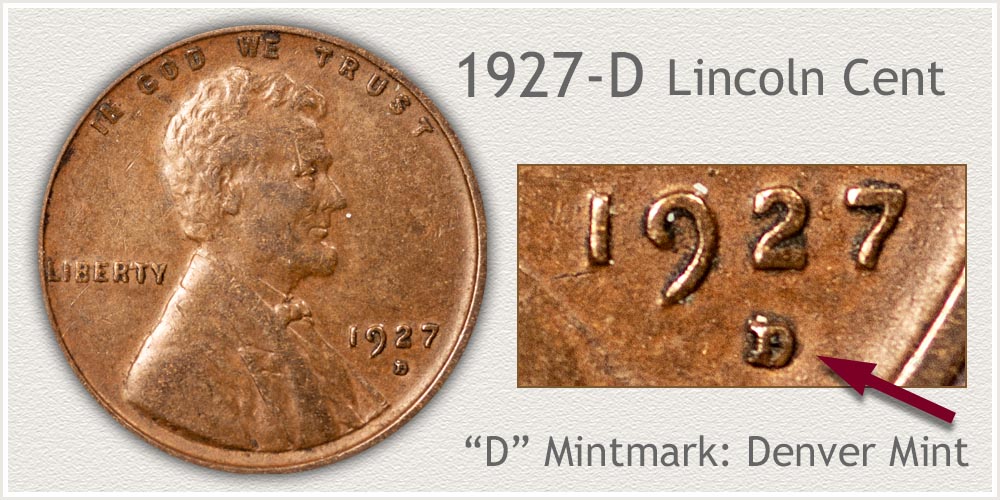
All branch mint wheat cents in the early era (1909 to 1933) are worth a premium in any grade. A well-defined example needs closer inspection. Rarity scale of Abundant in well-worn condition rises to Infrequent in Fine condition and above.
Inspect Lincoln's coat for a clear separation from the shirt. These lines if found bold and defined indicate a higher condition coin. Detail of the bowtie should include recognition of the knot in the center. A 1927-D with distinction in these areas is a nice find to collectors.
1927-S Lincoln Penny
"S" Mintmark Under Date: San Francisco Mint Struck the Coin
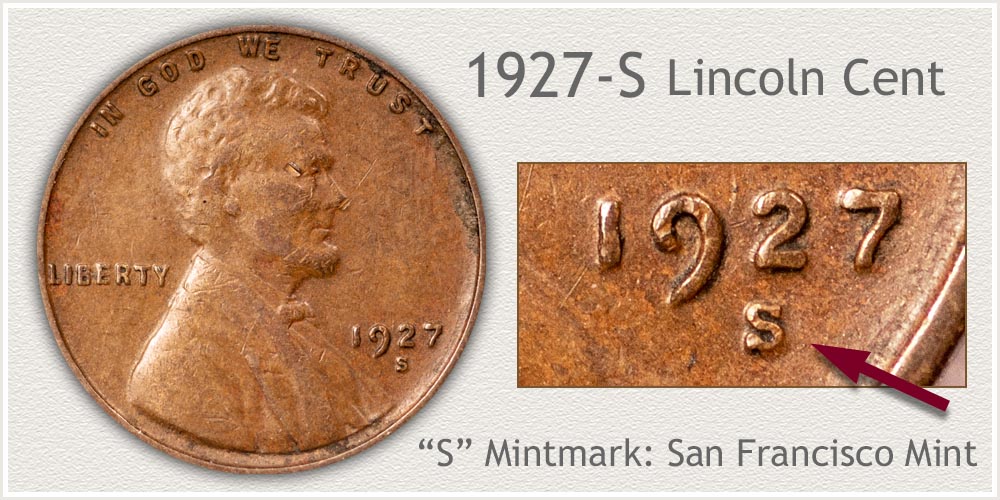
San Francisco production of cents in 1927 totaled 14,276,000. It has become the scarce variety of the pennies struck for this year. Majority saw continued use for years, wearing heavily. Demand from collectors seeking nicer condition coins is noted on the value chart by sharp rise starting with Extremely Fine grade and higher examples.
An inspection of the reverse identifies a higher end coin. In any condition, a crisp appearance verses a faded look is a better quality for these 1927-S cents. Bold lettering fully separated from the surrounding fields and rim is preferred.
Step 2: | Judge Condition to Identify Grade
Grading Condition Confirms Value of 1927 Lincoln Penny
Grade of an old penny is a definition used by collectors and dealers defining its condition. Grades are listed along the rows in the value chart. Each coin is judged, wear and surface preservation are noted. A comparison with the images of each grade visualizes these different grades.
Examine coins under a single light source during the grading process. A 100 watt incandesce bulb provides ample light to bring out subtle detail.
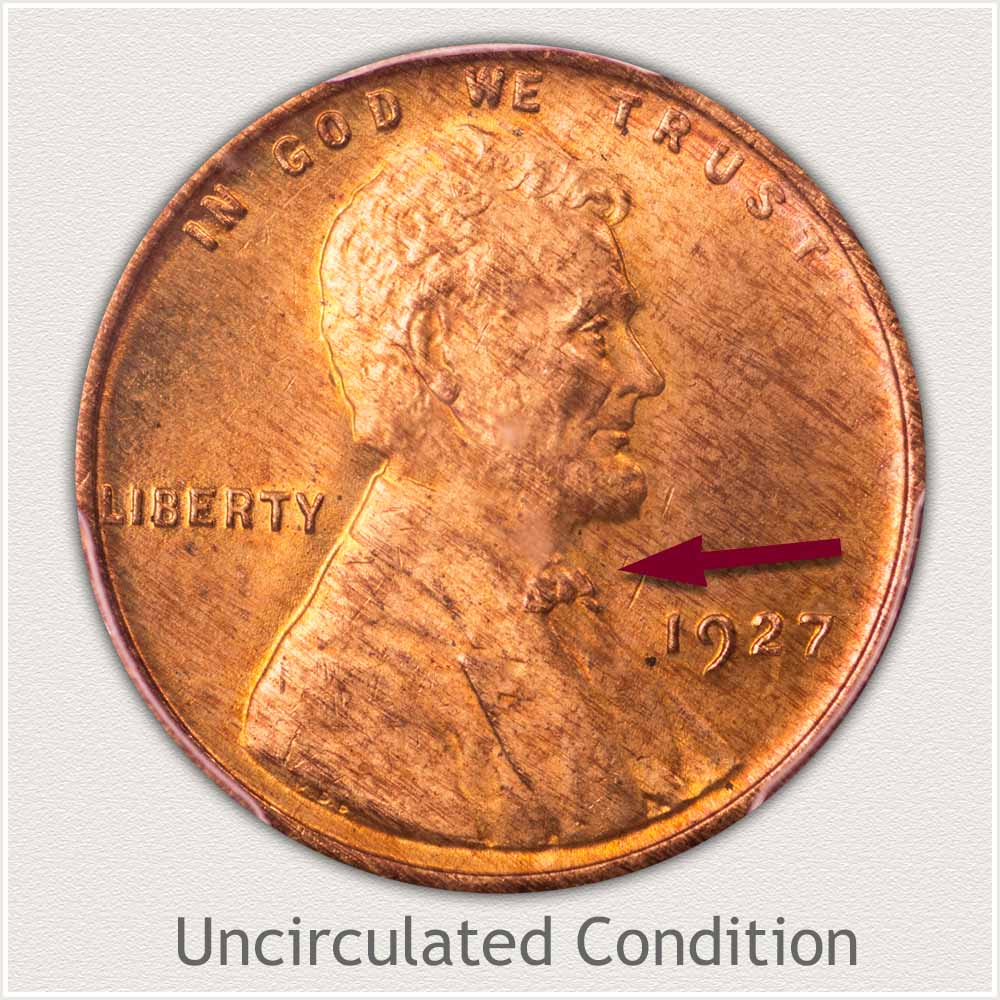
Uncirculated Grade: Mint state - uncirculated wheat cents hold a special allure with collectors. These are preserved in the condition they left the mint. No wear has removed any detail and all elements remain sharp.
One area helpful in detecting wear is Lincoln's bow tie. His tie has areas of high and low points. Inspect the central knot and outer edges of the ribbon for any smoothing and dulling of the metal. Wear removes original texture of luster leaving a distinct change from the lower areas of the tie.
The example 1927 penny is mostly bright with just slight amounts of toning laying on high areas. Pleasing shades of color bring out subtle details to the coat and face.
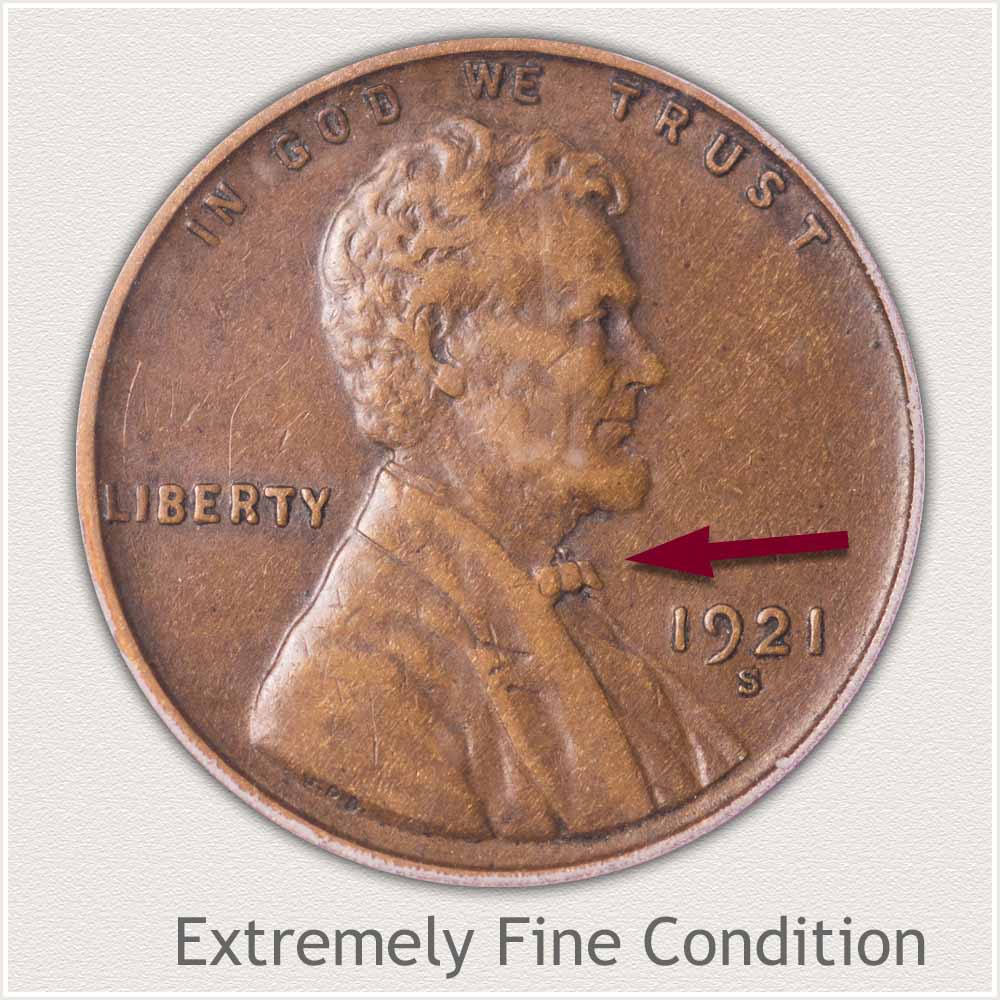
Extremely Fine Grade: Wear confined to the tops of high relief areas is graded as Extremely Fine. Slight wear just starts to flatten the peaks of Lincoln's hair, face, and areas of his coat.
Lincoln's bow tie displays small flat areas on edges of the ribbon and within the central knot. Three distinct lines remain defining the knot and a separation of the ribbon from his coat. Notable is remaining contour to all elements of the bow tie.
Pleasing toning with highlights gives old copper coins an eye appeal favored by collectors. A strong technical grade adds to desirability and value.
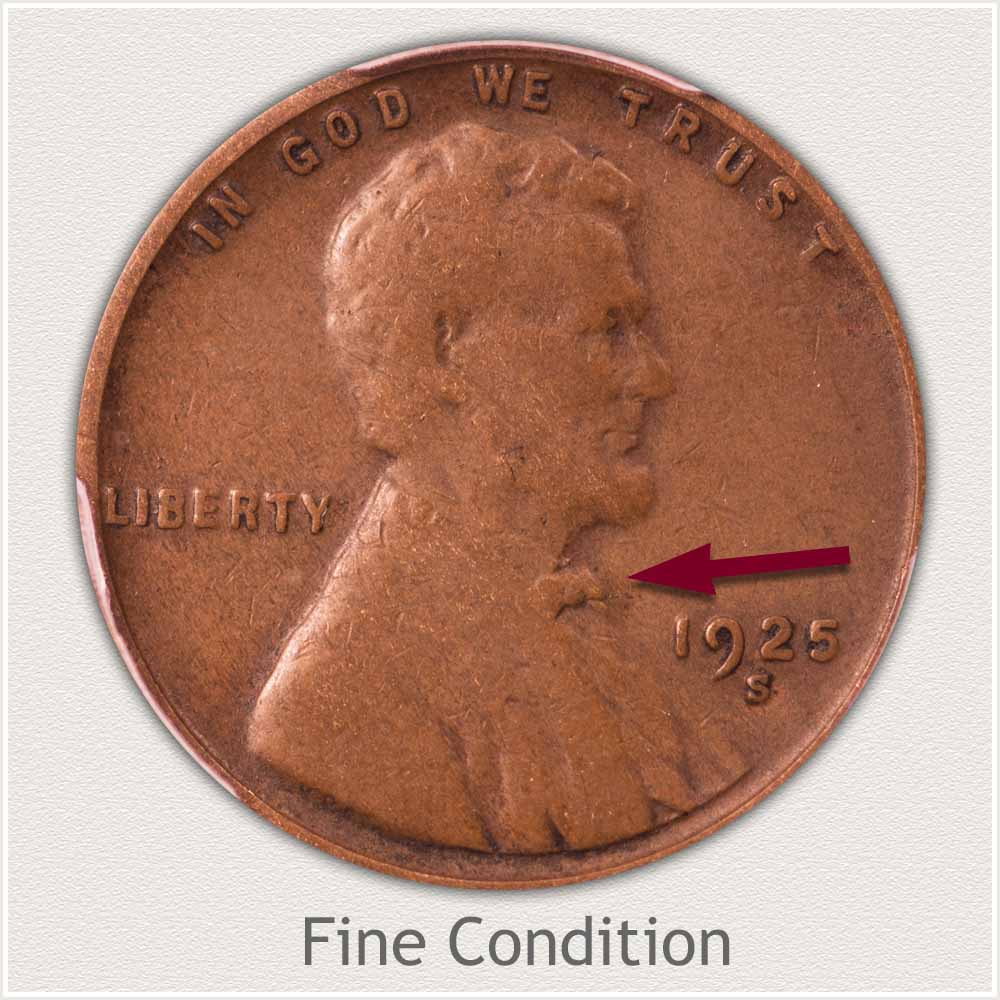
Fine Grade: Merging of major design elements helps identify a wheat penny in Fine grade. High areas are now flat across their tops and many have connected. Small indications of cheek and jaw remain.
Somewhat protected, Lincoln's bow tie is recognizable. His tie remains outlined but a clear separation of the central knot from the ribbon is lost due to wear. Separation of the shirt from the tie is also mostly gone.
Subtle contours remain within the coat design and Lincoln's face and hair on Fine grade wheat cents. Bold legends and a strong date add to eye appeal; an important part of establishing a value.
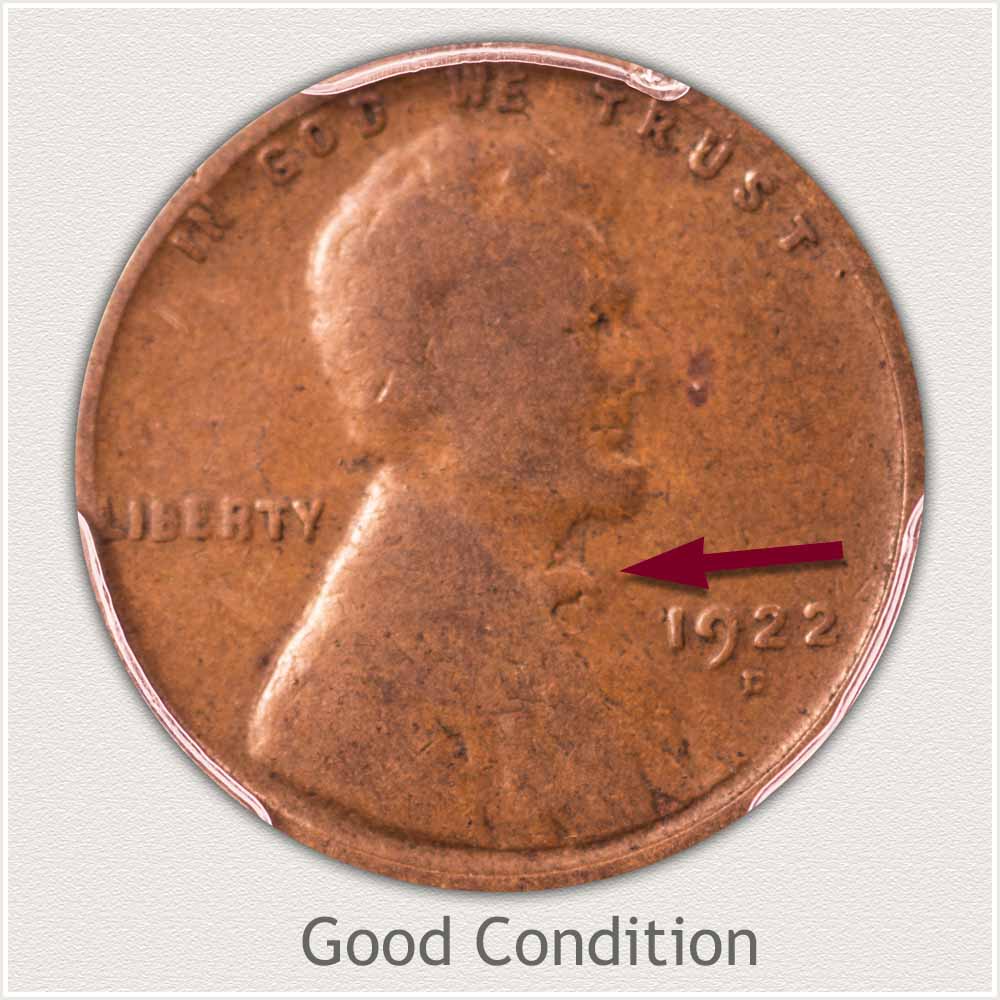
Good Grade: Smooth flat areas covering Lincoln's face, hair, and coat places a wheat cent in Good grade. Major detail is now reduced to an outline indicating extensive wear has taken place.
A once highly detailed bow tie is now lacking central lines and contours defining a separation of the knot from the ribbon. Often parts of the tie are lost and merged with the field or coat. A clearly outlined tie is a plus.
Take an overall view of your coin. A wheat cent in good grade is worn mostly flat, any definition adds to collectability.
Video | Grading Lincoln Wheat Pennies
Grading Lincoln Wheat Pennies continues the process of judging condition. Additional video, images, and descriptions are used to define important points to the obverse and reverse.
Step 3: | Special Qualities Enhancing Value
1927 Penny Lamination | Plus or Minus to Value
Minting a coin involves many complex processes. A misstep such as an engraving error or striking problem during milling and punching blanks is noticeable immediately. One fault in the process that is not quickly detected are known as "Lamination" errors.
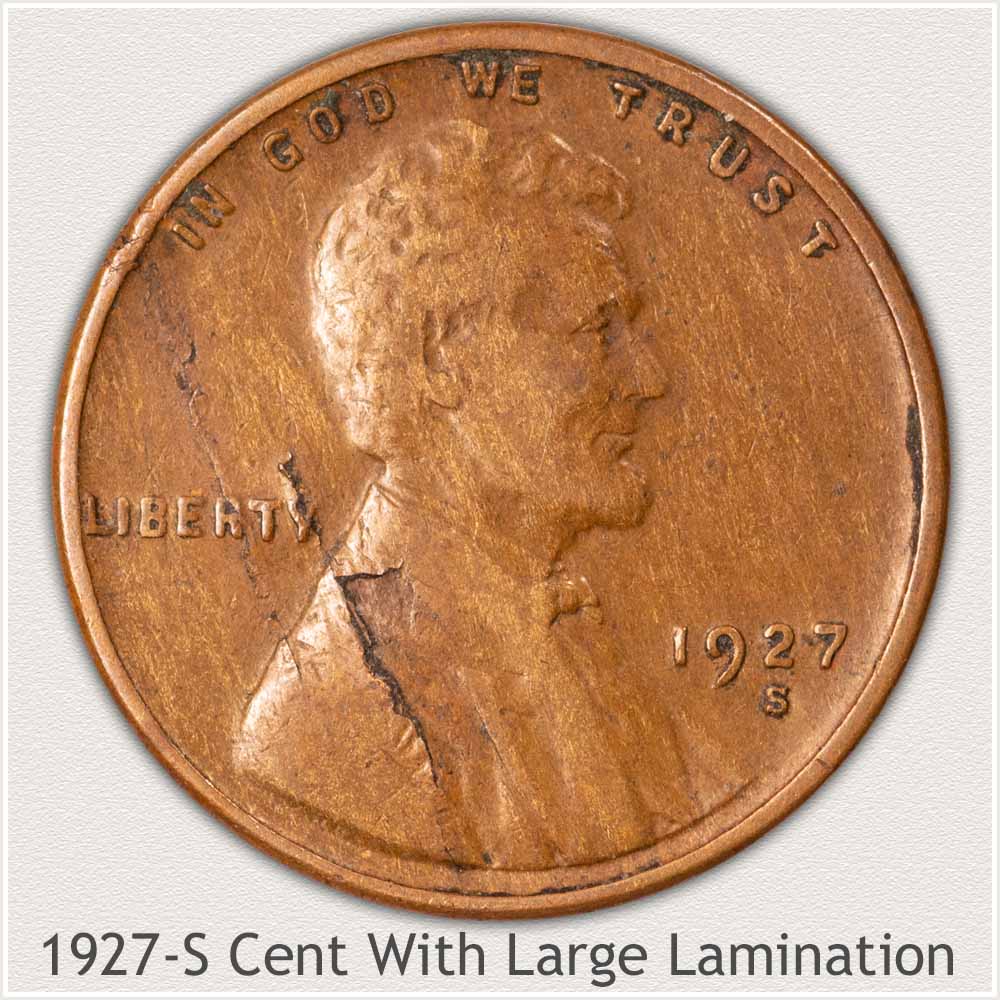
These lamination defects are traced back to proper mixing of alloy metals, rolling ingots into milling strips, and exact annealing. Faults in any step present themselves as separations within the metal. When a cent is struck, a void near the surface of the metal, chips or separates into thin layers. Difficult to detect at once. Lamination flakes and strips loosen and raise overtime becoming visible.
Debate among collectors over lamination faults on a coin involves adding or subtracting appeal. Personal preference decides. The example 1927-S penny features a large obverse lamination strip extending over the left side through "Liberty" and Lincoln's shoulder. An otherwise nice "S" mintmark example of an early era wheat cent carries a fault to some and is not added to a collection. Another collector finds interest with an uncommon lamination and adds a slight premium to value. A defect to one collector, a fascination to another.
ReferencesUS Mint. 1927 US Mint Annual Report https://nnp.wustl.edu/library/publisherdetail/51
Coin Values | CoinStudy Articles
Lincoln Wheat cents span the years 1909 through 1958. From the top condition coins collected by advanced collectors to worn examples; to an affordable collection for young collectors, the range of value is extensive. Identify your date, mint and condition and refer to the value chart.
Coin Value Guide | How to Value a Coin Collection
A step by step method combined with the coin value online guide identifies how to value a coin collection. Discover how much your box of old coins is worth.
★ Coin Values Discovery finds 1927 Penny Value and...
All US coin values. Recognize your old coins using the image links leading to value charts. Date | Mintmark | Condition are considered; all described and imaged within each series. Surprising value is often found in the smallest of detail.